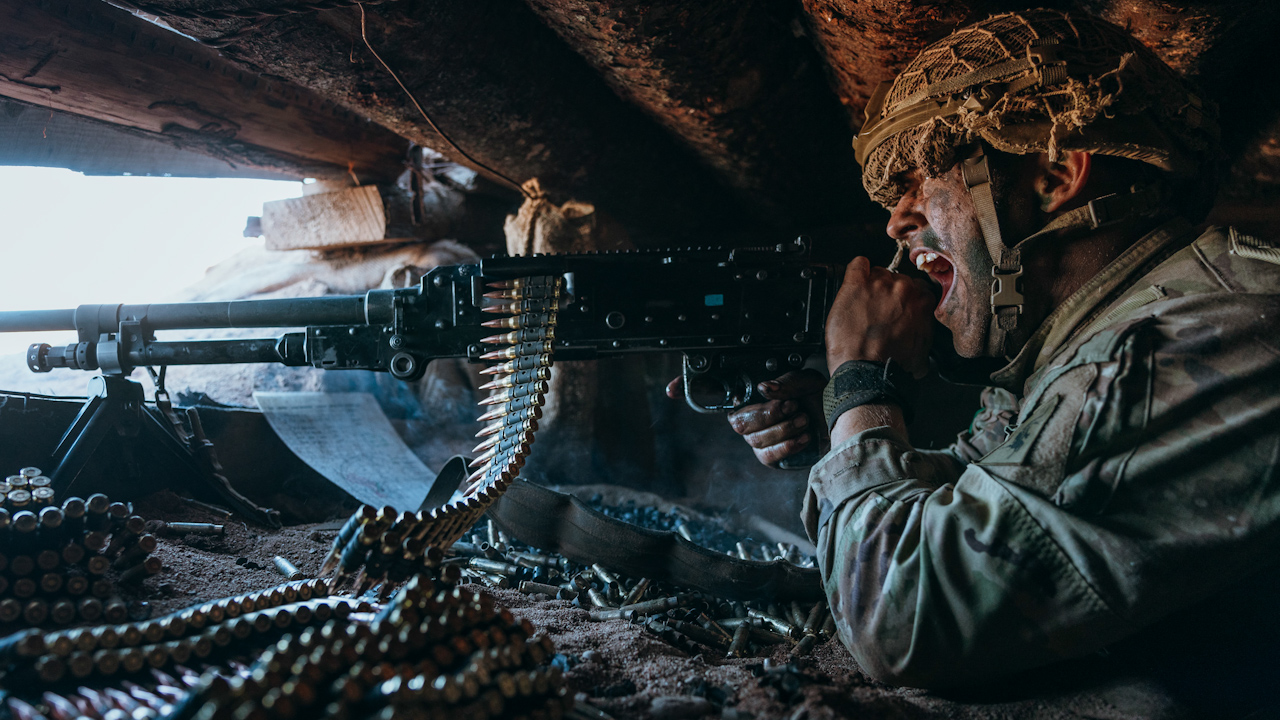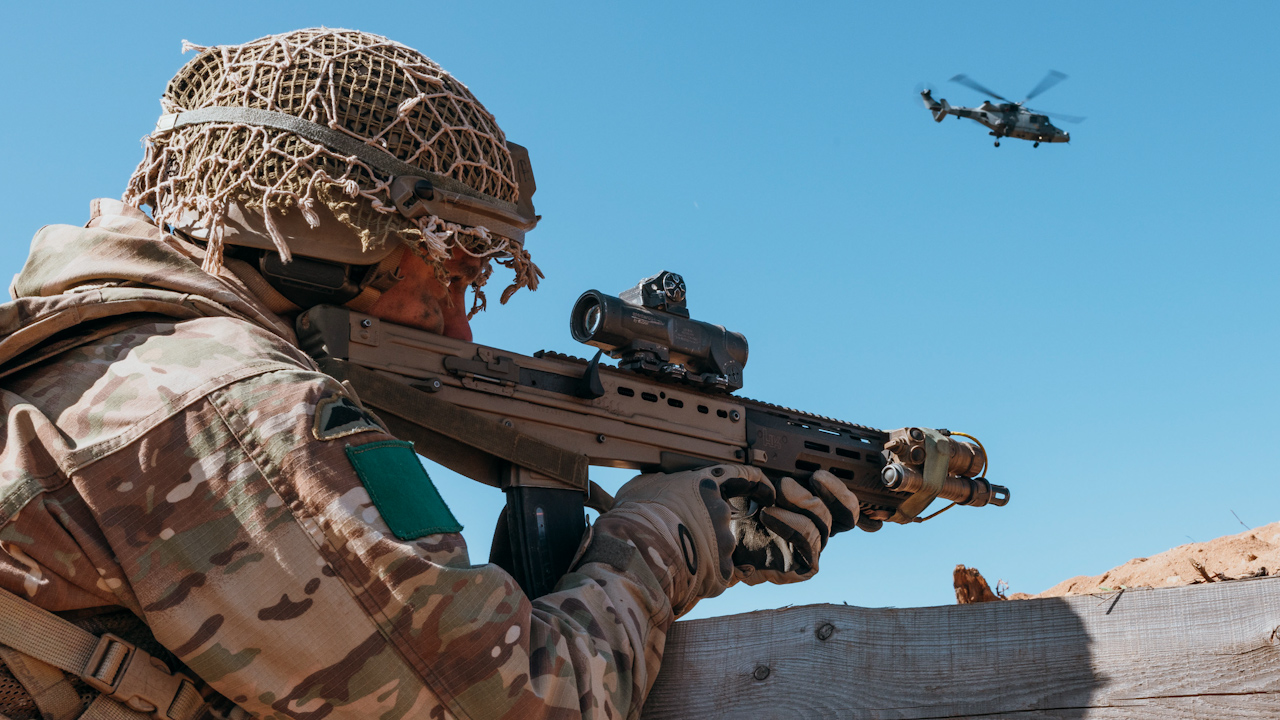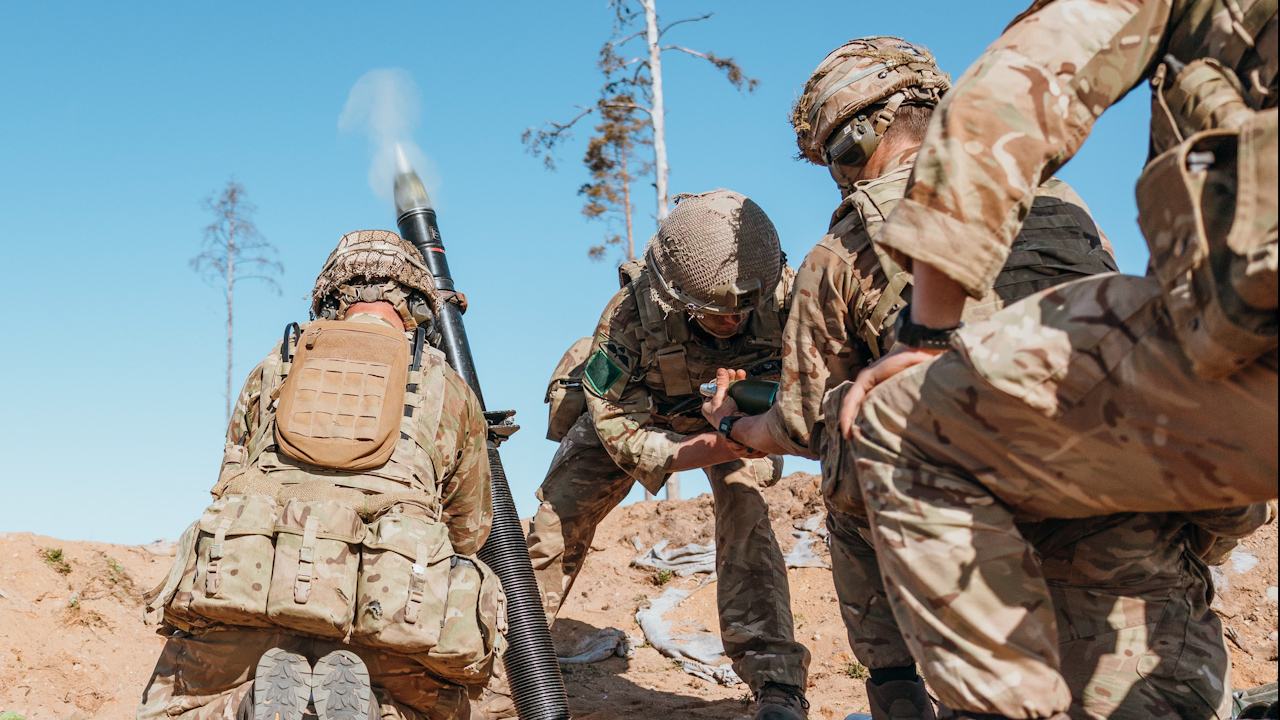
Paras blast through enemy trench system during 48-hour live-fire exercise in Estonia

The firepower and assault tactics of the Parachute Regiment were on full display in a two-day live-fire exercise in Estonia.
As part of Exercise Swift Response, members from 3rd Battalion the Parachute Regiment Battlegroup (3 Para BG) cleared and held a 3km-long trench system despite being hampered by enemy drones.
Three Para BG's Commanding Officer, Lieutenant Colonel Dave Mans, said: "From Estonia, we do not need to look very far to see real battles being fought in trenches.
"We need to develop, maintain and excel at operating in these conditions.
"The more we do at this scale and complexity, the better prepared we are for any environment.
"Training builds relationships, we learn how we react under pressure and understand what our capabilities are to make the battlegroup as effective as possible, whatever it is asked to do."
The exercise was inspired by the evolution of trench warfare seen in Ukraine and in other conflicts around the world.

The paras were inserted in by Chinook helicopters during the night ahead of their assault at dawn.
The area was swarming with enemy drones, which the soldiers had to counteract by launching intelligence-gathering drones of their own.
To subdue the enemy strongpoints, 3 Para used 105mm Light Guns, 81mm mortars and called in strafing runs from Wildcat helicopters which used their 12.7mm heavy machine guns.
After taking the trench, the airborne soldiers defended the position during the night and blasted trees to create natural fortifications.

Airborne engineers also took part in the exercise.
"We're combat engineers, but we carry rifles and put rounds down when needed – and I did," said 23 Parachute Engineer Regiment Sapper Will Coleman.
"We removed obstacles in the way of the infantry - we blew up barbed wire fortifications for the initial break-in, blew open bunkers and cleared mines."
Air support was coordinated by 7 Para RHA’s Joint Terminal Attack Controllers (JTAC), who have practised working with Typhoons, Apaches, Wildcats and Puma Uncrewed Air Systems.
Warrant Officer Class 2 Adam Colvin described the job as "doing air traffic control with high explosives".
"As a crossing point between operations on the ground and in the air, a JTAC is a real force multiplier," he said.
"When it's all kicking off, the commander is looking for options and there are aircraft overhead, you have got the ability to drop the bomb that changes the situation.
"There is a lot of pressure - you have to settle yourself, trust your training and experience and follow the procedures."









